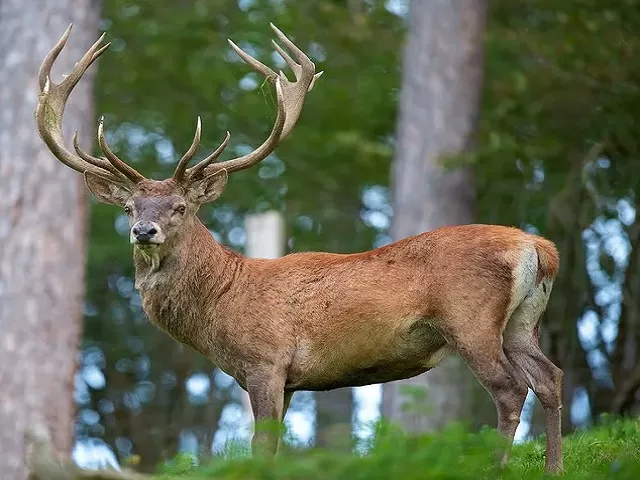Kashmiri stag

About Kashmiri stag
- The Kashmir stag , also called hangul , is a subspecies of Central Asian red deer endemic to Kashmir and surrounding areas.
- It is found in dense riverine forests in the valleys and mountains of Jammu and Kashmir and northern Himachal Pradesh.
- In Kashmir, it is found primarily in the Dachigam National Park and in Tral Wildlife Sanctuary.
Trends in Population size
- Since 1947, the population of hangul has witnessed a sharp decline.
- In 1947, around 2,000 were spotted and the number fell to 384 by 1968.
- The hangul population was estimated at a mere 197 in 2004, touching the lowest of 183 in 2015 and showed a steady increase to 261 in 2021.
Causes for Declining Population levels
-
- Low breeding amongst Hanguls due to existence of a female biased sex ratio. There are 19.2 males per 100 females which is much lower than the ideal ratio.
- Lack of participation from the local communities like Gujjars, Nambardars, Bakarwals, Patwaris, and Chowkidars in the conservation of Hanguls.
- Establishment of Cement factories near the habitat of Hangul deer.
- Limestone is extracted from the region in an unscientific manner. The mines have become a death trap for the Kashmir red stag.
- The emergence of militancy followed by the security force actions also negatively impacted the conservation efforts.
Conservation status
-
- It is a critically endangered species as per IUCN red list.
- It is listed in Schedule I of the Wildlife Protection Amendment Act, 2022
- It is listed in Appendix I of CITES
Why in news?
- Experts have pointed out that the mating calls made by hangul during rutting season are indicative of an increase in Hangul Populations.
Subscribe
Login
0 Comments
